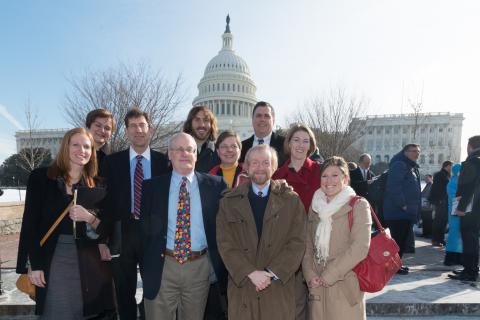
A few weeks ago, I was with a group of my colleagues in Washington, D.C., representing the American College of Sports Medicine (ACSM) and seeking support for a bill to fund the U.S. Physical Activity Guidelines. For the last 2 years, ACSM has partnered with the Sport and Fitness Industry Association on Capitol Hill Day, as our opportunity to meet with U.S. Representatives and Senators to both educate them and to seek their support for funding that helps promote a physically-active lifestyle. The specific purpose of ACSM was to ask Congress to fund a once-a-decade peer-review and update of the U.S. Physical Activity Guidelines.
The first such Guideline was published by the Department of Health and Human Services in 2008, and was an excellent beginning but does not fully address the needs for all Americans. Most particularly, new research on exercise in persons with chronic health conditions needs to be integrated into the existing guidelines, and this will need to be updated periodically for several decades to come. At a total cost of $250,000 once a decade, the cost of this national enlightenment on the role of exercise in maintaining health is a bargain!
My team of SFIA and ACSM members was assigned to, among others, Senate Majority Leader Harry Reid. His senior policy advisor, a woman named Carolyn Gluck, asked us how to do a better job of providing prevention through the Affordable Care Act. This is a great question, and I was both grateful and eager to have an opportunity to share my opinion with someone as influential as Ms. Gluck.
My answer is that America's health care system needs to do a better job of engaging primary care practices in health promotion, it needs to be done in a sustainable business model where the physician's time is compensated, and that their role is to exert the PCP's strong moral imperative for investing time, money and energy in a healthy lifestyle. The Affordable Care Act now makes all of this possible, because one of the mandatory elements of an ACA-compliant health plan is coverage of a no-copay / no-deductible Annual Wellness Visit.
One of the challenges that remains for Americans to gain maximum benefit from our society's investment in health promotion is to leverage Annual Wellness Visits in support of Worksite Wellness programs (another element of the Affordable Care Act). Right now, Worksite Wellness and Annual Wellness Visits are in their own silos - the employer's human resources staff are telling their employees one thing, but this message is very rarely coordinated with the moral imperative that the PCP can provide. Employers clearly have secondary gain (higher worker productivity), but PCPs do not. Worksite Wellness programs need to tear down their silos, keeping the implementation resources in place but engaging with their community's primary care practices. That's how to make health promotion a win-win-win-win solution for your community.
• Employer wins by having healthier employees, spending less on health care and reaping benefits in worker satisfaction and productivity.
• Employee / Patient wins by being happier and healthier, with a better quality of life.
• Primary care physicians win by being paid for providing their moral imperative and support, because of the value that provides to employers.
• Communites win because healthy lifestyle businesses (gyms, personal trainers, nutritionists, local farms and food-service businesses, recreation businesses, etc.) succeed in improving the health of the local population, while earning a living for doing this critically-important community service.
Invest in your community. The place to start is in breaking down the silos between all of these stakeholders, and figuring out how to work together to improve the richness of life in your city or town.
- GEM
